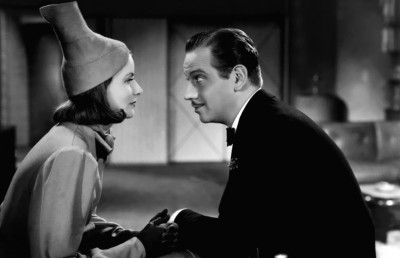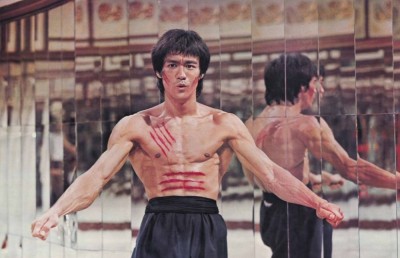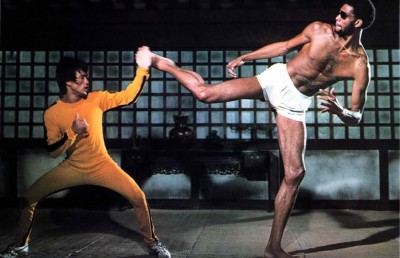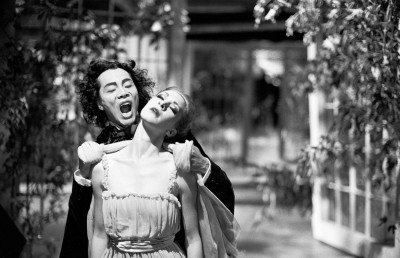Mann and his Discontents
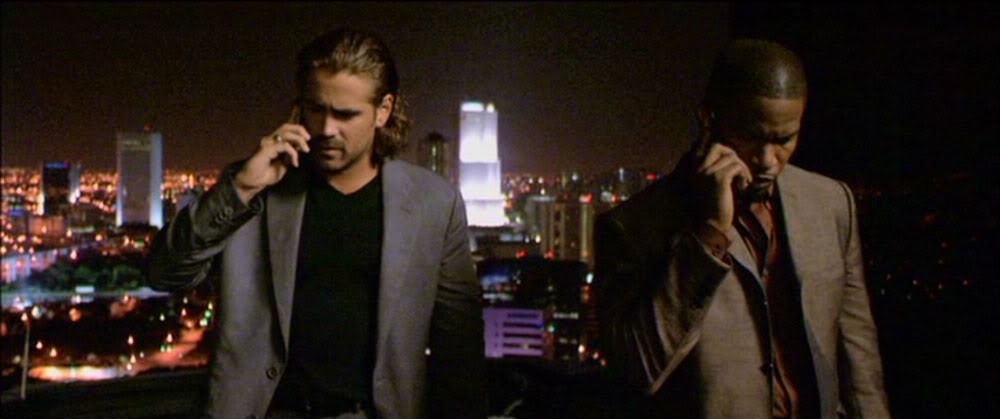
Preface – Notes on Auteur Theory
Undertaking a critical review of any director’s body of work is to engage with the auteur theory of film criticism. Upfront then let me articulate what I take auteur theory to be. Rather than expound upon the numerous detailed writings of how an auteur can be defined I would offer a rather simple proposal. An auteur is a filmmaker whose entire filmography can be interpreted as a single work in that it represents a unified and consistent, although multifaceted and nuanced, philosophical worldview. As a result, irrespective of genre or subject matter, the filmmaker has been able to attain enough control over the material to ensure that his perspective and pre-occupations control the core meaning of all his films, regardless of the use of different writers and crew on each picture.
I might add one caveat here. I think we might expect this worldview to be mature and sophisticated, as subjective as these terms are, in order to consider a filmmaker an auteur. Michael Bay, for example, may carry a consistent worldview throughout his filmography but it is one of simplistic moral values, stereotyped cultural, sexual and gender representation, celebration of violence and obsession with the omnipotence fantasy. As such I am happy to turn auteur theory discussion exclusively towards those who have made an important artistic contribution to the medium of film, that is to say, those who have explored aspects of the human condition in interesting and insightful ways in order to challenge and enlighten audiences. Clearly, not every good director is an auteur (Ridley Scott for example – I concur with Sight & Sound who have described Scott as “less an auteur than a top dollar metteur en scène”), [1] but we might expect that every auteur would be a good director. However, a film is not, by definition, good, meaningful or valuable because it is the work of an auteur. A film can be judged on its own merits regardless of whether the director has yet established himself/herself as an auteur. Nor should a director necessarily try to establish himself as an auteur.
I would also want to note that auteur theory does not necessarily undermine the validity of other theoretical approaches. Rather, auteur theory becomes an interesting and revealing way to review the work of filmmakers and can lead us to recognise that the filmography as a whole can be greater than the sum of its parts, and that its constituent parts, the individual films, can benefit from the broader insights we can glean from a worldview more fully articulated across a body of work.
With this in mind I shall posit here that the body of work created by Michael Mann concerns itself with a single, although complex, theme and his sophisticated exploration of this theme across numerous films in different genres, narratives and settings marks him out as a great contemporary auteur.
The Existential Crisis in Mann
“The development of the individual seems to be a product of the interaction between two urges, the urge towards happiness, which we usually call ‘egoistic’, and the urge towards union with others in the community, which we call ‘altruistic’…The two urges, the one towards personal happiness and the other towards union with other human beings must struggle with each other in every individual.”
Freud, Civilisation and its Discontents [2]
In 1976 Hans Feldman wrote an article on Stanley Kubrick and his work, “Kubrick and His Discontents,” [3] which postulated that Kubrick’s philosophy as expressed via his filmography was primarily concerned with the issues raised by Freud in his essay, “Civilisation and Its Discontents.” Specifically the civilising process, into which we are all initiated as part of growing up and entering society, requires the individual to both repress and sublimate his instinctual drives, the sexual and the destructive, and in doing so he frustrates his ability to attain happiness. In Kubrick’s films human agency is stifled by the structures, institutions and value systems that man erects for himself which limit any meaningful individual impact and undermines the realisation of personal fulfilment.
Michael Mann’s films are also well explained with reference to this work of Freud’s which offers great insight into Mann’s preoccupations. They share similarities to Kubrick’s work but also significant differences. Where Kubrick’s aim is broad, with his characters eschewing an easy sense of audience identification, they are best thought of as representations or symbols of mankind, Mann’s films are often described as existential male dramas which concern themselves more with identification with individual protagonists who experience a high degree of inner conflict and are forced consciously to re-affirm the choices which define them.
Referring to the above quote from Freud, Mann’s characters are conflicted between the desire for isolation from society and the desire for integration into it.
They define themselves by their work. They are self aware and live their lives with a degree of existential authenticity. They are brought face to face with the stress of creating this clear sense of identity. They are the ultimate professionals who live for their jobs. They act in accordance with a clearly articulated philosophy and define themselves with clarity. They do as they say. Think about the state of mind that Vincent Hanna (Al Pacino) consciously and explicitly maintains in Heat, “I gotta hold on to my angst. I preserve it because I need it. It keeps me sharp, on the edge, where I gotta be,” or the philosophy articulated by Neil McCauley, “Don’t let yourself get attached to anything you are not willing to walk out on in 30 seconds flat if you feel the heat around the corner… That’s the discipline.” Will Graham (William Peterson) purposefully puts himself through psychological trauma by inhabiting the mindset of a serial killer in order to catch him in Manhunter. Nathaniel Poe (Daniel Day Lewis) adopts the persona of Hawkeye to live his life as a Mohawk in The Last of the Mohicans. The code of extreme professionalism is found in Collateral in both the characters of Max (Jamie Foxx), who meticulously cleans his taxi and knows the exact length of time to each destination, and Vincent (Tom Cruise), who is completely in touch with his life choice as a contract killer –he tells Max, “You even bullshitted yourself, [that] all I am is taking out the garbage, killing bad people.” Mann’s protagonists are committed.
However, this strong sense of self and strict value system brings the characters into conflict with those around them. Jeffrey Wigand (Russell Crowe) and Lowell Bergman’s (Al Pacino) commitment (in The Insider, 2009) to revealing the corporate wrong doings of the tobacco industry carries them into a battle with corporate America and in turn the media complex and legal system. When Hawkeye, who fights for the right not to live by another person’s leave, is asked if he calls himself a subject to the Crown he responds, “I do not call myself subject to much at all,” and his sense of independence ensures that he clashes with both the British government and the Huron tribe. Will Graham must face the serial killer he forces himself to identify with. Vincent Hanna and Neil McCauley are destined to face off as a result of their sheer tenacity to see their jobs through as stated by McCauley, “What if you do got me boxed in and I gotta put you down? Cause no matter what, you will not get in my way. We’ve been face to face, yeah. But I will not hesitate. Not for a second.”
This conflict puts significant strain on the protagonists from a psychological perspective and the sense of isolation, and even the appeal of removing themselves from the society around them that is so oppressive, is palpable. Max dreams of escaping to an atoll, he wants literally to live out the mantra ‘every man is an island’. Will Graham must segregate himself from his family for fear of hurting them whilst he carries out his work. Vincent Hanna consciously causes his marriage to fracture because the call of his job will not allow him to function effectively as a husband or a father, “My life’s a disaster zone. I got a stepdaughter so fucked up because her real father’s this large-type asshole. I got a wife, we’re passing each other on the down-slope of a marriage –my third– because I spend all my time chasing guys like you around the block. That’s my life.” The representation of Ali (Will Smith) as an introverted and conflicted persona is at odds with his public persona and image, deep in thought and inner turmoil regarding his treatment at the hands of the government and boxing authorities as a result of his insistent refusal to being drafted into the army to fight the Vietnamese. Jeffrey Wigand retreats into the confinement of a hotel room, his new home, to ponder his choice to take on big business and the annihilating effect it has had on his life. Lowell Bergman takes a leave of absence following his run in with senior management at CBS and retreats to the protection of a rural seaside escape. Indeed, stylistically this isolation is often represented by the modernist glass houses by the sea that we see so many of his character’s inhabit (Will Graham, Neil McCauley, Lowell Bergman, Muhammad Ali, Sonny Crockett) which appears to offer both protection from the outside world and highlight their loneliness against a background of a deserted ocean and which acts in stark contrast to the urban heavy imagery which Mann usually works with.

In summary, these external forces in society threaten the character’s sense of self, freedom, physical safety, family and their value systems, and they feel that removal from this oppression, or the strength to take it on, is possible only if they create an island for themselves. It is interesting to note that Mann’s characters do not undertake an internal change, development or arc, often quoted as the key ingredient in storytelling. His characters are instead required to manage conflict and reject pressures, desires and options which would undermine their authentic selves. The greatest crime for a Michael Mann protagonist is “betrayal of self.” [4]
However, with all the above in mind, at the same time Mann’s characters find themselves in need of the things that society offers, most importantly a reinforcement of their sense of identity, because this chosen identity becomes meaningless when removed from society, especially when it is so closely tied to a sense of the triumph of human agency. Mann’s characters are not impotent like Kubrick’s. The individuals, structures and systems that cause them such stress can be overcome through sheer force of will and Mann ultimately celebrates the power of human agency, although he is clear in emphasising the weight of the stress and size of the challenge associated with it. Will Graham and Vincent Hanna do track down their targets. Jeffrey Wigand and Lowell Bergman do get their message aired on 60 Minutes. Muhammad Ali does triumph over adversity and regain his boxing title. Max does meet the challenge to defeat Vincent.
The sense and draw of isolation then detracts from the ability to gain meaning for themselves as an effective agent/subject in the world. It would render what they stand for socially meaningless and ineffective (even impotent), hence the existential conflict between the protection of isolation and the draw to society/community/civilisation.
Where Mann adds a further layer of sophistication to this dynamic is in his characters’ internal struggle with their desire to love and be loved by a woman. This intimacy can only be found through human interaction and is at odds with the desire for isolation. It is often tainted, imperfect and is threatened by others, but it does serve to undermine the fantasy of perfect loneliness. I have already mentioned the strained relationships of Will Graham and Vincent Hannah but think also of the conflict that Neil McCauley undergoes as his life with Eady (Amy Brenneman) falls away before his eyes in his choice to walk away from their future together, the ultimate test of his discipline, when Vincent Hanna tracks him down. This is echoed by Sonny Crockett (Colin Farrell) rejecting an infatuating relationship with the drug running Isabella (Li Gong) in the closing scenes of Miami Vice in order to rejoin his partner and his identity as a law enforcer which was threatened by his desire for her (most obviously stated in Tubbs’ questioning of Crockett earlier in the film – “There’s undercover, and then there is which way is up?”). In Public Enemies we follow the intrinsically incompatible nature of John Dillinger’s (Johnny Depp) relationship with Billie Frechette (Marion Cotillard) which his lifestyle cannot incorporate. Ali must reject his marriage with Sonji Roi as his strict Muslim values cannot accommodate hers. In Mann’s work the love interest threatens the sense of identity of his characters and so it must be rejected in favour of authenticity. Or, as per Heat and The Insider, the sense of self identity is so aligned with machismo that the women reject the men who fail to offer appropriate support outside of life and death situations. His characters are drawn into conflict between their values, which manifest themselves in their work, and the fulfilment of their obligations as a lover. Mann’s men can only assert themselves effectively in a hostile world, can only demonstrate the ability for human agency to succeed through an extreme commitment to their values, and this usually requires a rejection of the pull of the object of sexual desire and love.
This is an assumption that needs to be questioned. Can Mann really not imagine a world in which intimacy with a special woman does not conflict with authenticity? Vitally, there is no place in Mann’s pictures for a genuinely conflicted and interesting female character. Women are denied the right to existential anxiety, and thus self identification and maturity, in Mann’s films. They are relegated to a role in which they support, sometimes effectively but usually less so, the male protagonist.
So what else works less successfully in Mann’s worldview as articulated by his films and is less appealing from an intellectual standpoint in terms of his philosophy? His characters usually carry out their resistance to the oppression they face through typically masculine traits which often involve the use of physical force or violence. This means that his films tend both to celebrate machismo and to act as an easy source of identification with omnipotence fantasy, which undermines the more mature acceptance of existential anxiety. Hawkeye, Vincent Hannah, Neil McCauley, Sonny Crockett, Ricardo Tubbs, John Dillinger, Melvin Purvis – all are abnormally, if not impossibly, physically capable. This can perhaps turn his films into better pieces of entertainment but the obsession with extreme masculine physical capability threatens to undermine the moral position of his films. I have had many people tell me that the problem with Heat and Collateral is that the wrong person wins at the end. They want Neil McCauley and Cruise’s Vincent to vanquish. It is these characters who represent the fantasy of the ego-ideal, more so than the law abiding Vincent Hanna and Max, and it is this fantasy that we often want to succeed, not have taken away from us. As a result the films become rather less nuanced studies of the human condition. Mann wants us to celebrate in our sense of the ego-ideal as Neil McCauley and crew tear up downtown LA like a four man army or as Vincent single-handedly deals with the bouncers, police and his target in a nightclub. He is clear in interviews about his intention that these characters are sociopaths but this admiration for them is troubling. Furthermore, in Collateral, the central theme approaches the dangerous notion that existential self-realisation, Max’s fruition into a ‘doer’ under the influence and pressure of Vincent, is a prize for perpetrating violence. However, the ‘good’ guys in Mann’s films (Hawkeye, Vincent Hanna, Ali, Max, Tubbs, Crockett, Purvis) are typically differentiated from their foes in that they are not abusive or exploitative with their physical prowess. Rather they use these masculine traits only to re-assert themselves against the threats to their worlds. The one really interesting character in this regard, who threatens to break the mould, is Will Graham, who is clearly identified as a ‘good guy’ but who threatens to step over the line and harm the ones he loves whilst in a self induced period of psychological stress. This hints at the implicit threat to the common good that these unusual physical capabilities might have if misdirected.
Mann places his recurring theme of existential anxiety, the choice between isolation, community and intimacy, in different scenarios which can add to or detract from their overall artistic and intellectual achievement. Despite the fact that Mann is clearly most at home in the crime genre, which makes up the majority of his work and represents his most commercially successful films, this also appears to be limiting for him artistically as he gives way to the macho instincts which undermine the seriousness of the enterprise. It is when he steps out of the crime genre that an extra dimension is added to his usual thematic motif. For example his period piece, The Last of the Mohicans, benefits from Mann’s extraordinary eye for detail and provides him with a more overtly political and social context. In covering recent history with Ali and The Insider he can explore these themes in ways which have a larger impact than just the personal. This is particularly the case with The Insider, which must be his best film and indeed one of the greatest films of the past couple of decades. It melds perfectly the political (the threat posed by big business to public well being, an effective judiciary and an independent media) and the personal (the tangible stress associated with a commitment to altruistic virtue) and which rejects the macho omnipotence fantasy in favour of more realistic, and hence more powerful, heroics. Jeffrey Wigand and Lowell Bergman’s sense of virtue encompasses the central qualities of the open society. Not only is their sense of self threatened but indeed so are the institutions of effective democracy. The stakes are enormous and the triumph of human agency they represent, and the pressures they manage, have import beyond the merely existential. The film is an awesome accomplishment and the most politically resonant use of Mann’s thematic pre-occupations.
Let me finish by daring to compare Mann with Kubrick more directly, given that I have argued that both, in very different ways, reflect keys themes of Freud’s “Civilisation and Its Discontents.” Mann simply does not reach the depths of philosophical insight that Kubrick does, but then neither do many filmmakers in history. They are, in some ways, markedly different, but in others quite similar. Mann’s films invite identification in a way which Kubrick’s do not. They function better as entertainment than Kubrick’s films, which cannot be understood by a viewer who is intellectually unengaged and passive. Both Mann and Kubrick are highly conscious of their shot composition which is intended to confer meaning. For both of them form and content coalesce. A very basic example of this might be the ‘shot, reverse shot’ cutting that Mann uses to demonstrate Will Graham’s psychological boundaries being attacked by Hannibal Lektor as the latter forces Graham to enter his mental space. The cutting process brings the two of them into the same screen space and Graham symbolically ‘becomes’ Lektor.

Another example is the symbolism of the final shot of Heat, which captures with a single image a summation of the nuanced comparisons and contrasts of the two main protagonists as a central theme of the film –they are joined at the hand but with the potential symmetry of the image purposefully distorted to emphasise each character as being different sides of the same coin (one is dead and one is alive, one is sitting and one is standing, one is facing us and the other is facing away, etc.):

Like Kubrick, Mann’s images are meticulous and bear the marks of a perfectionist at work. They both use symmetry, often of architectural structures, as a way to demonstrate the order and limitations that civilisation imposes upon the desires of the individual.


Mann, like Kubrick, has an understanding of film syntax, language and grammar, particularly combined with music score, which means even his more run of the mill projects are infused with a sense of maturity and intelligence uncommon in action or crime films. Some of the most extraordinary passages in Mann’s work display his capability in create meaning with little or no dialogue. The extended final battle scene in The Last of the Mohicans is as cinematic as action scenes come and is effectively dialogue free for about seven minutes. The opening eight minutes of Ali are equally as impressive. Via a largely wordless montage the full thematic template of the film is unravelled and communicated to us. “You know in the first few seconds that it, in every respect, will be a class act… We know where he’s been and where he’s coming from in a handful of swift, subtle cuts… There are few better first 15 minutes in cinema anywhere… his Ali is a formidable piece of film-making.” [5] As Sight and Sound articulates it, “In a few minutes we know this movie is about boxing, civil rights and popular culture in America. In establishing so rapidly the film’s co-ordinates, Mann also tries to deliver the equivalent of Ali’s boxing shuffle, dancing around the ring of preconceptions and collective memories that surround the myth of the world’s greatest ever athlete while avoiding sucker-punch clichés and redundant exposition.” [6] These sequences are representative of cinema in its purest form and allow favourable comparison with the best work by any of Mann’s contemporaries.
Arguably, Mann has pushed visual innovation in mainstream cinema more than any other with his initiation of night time digital cinematography and a documentary-like hand held camera movement married to a studied mise-en-scene (if not quite as rigorously intellectual as Kubrick’s). However, Mann has never really subverted or undermined classical film grammar. He follows the basic narrative rules of American cinema and within this finds an existential, if over masculinised, voice. He displays technical bravura and puts it to work to explore human beings. Indeed, much like Kubrick, Mann does not distinguish between form and content. He puts style in the service of substance.
Endnotes
1 “Decline and Brawl –Film of the Month: Gladiator,” Sight & Sound, June 2000
2 Freud, Sigmund (1985) “Civilisation and Its Discontents” (1930 [1929]) in Sigmund Freud: Volume 12: Penguin Freud Library: Civilization, Society and Religion, London: Penguin Books (1991), p.334
3 Feldmann, Hans (1976) “Kubrick and His Discontents” in Film Quarterly, Autumn 1976
4 Steensland, Mark, Michael Mann: The Pocket Essential, Harpenden: Pocket Essentials (2002)
5 Preston, Peter, “Why Britflicks can’t compete” in The Observer Review, 3 February 2002, p6.
6 Wootton, Adrian, “The big hurt” in Sight and Sound, March 2002, Volume 12, Issue 3, p16.



